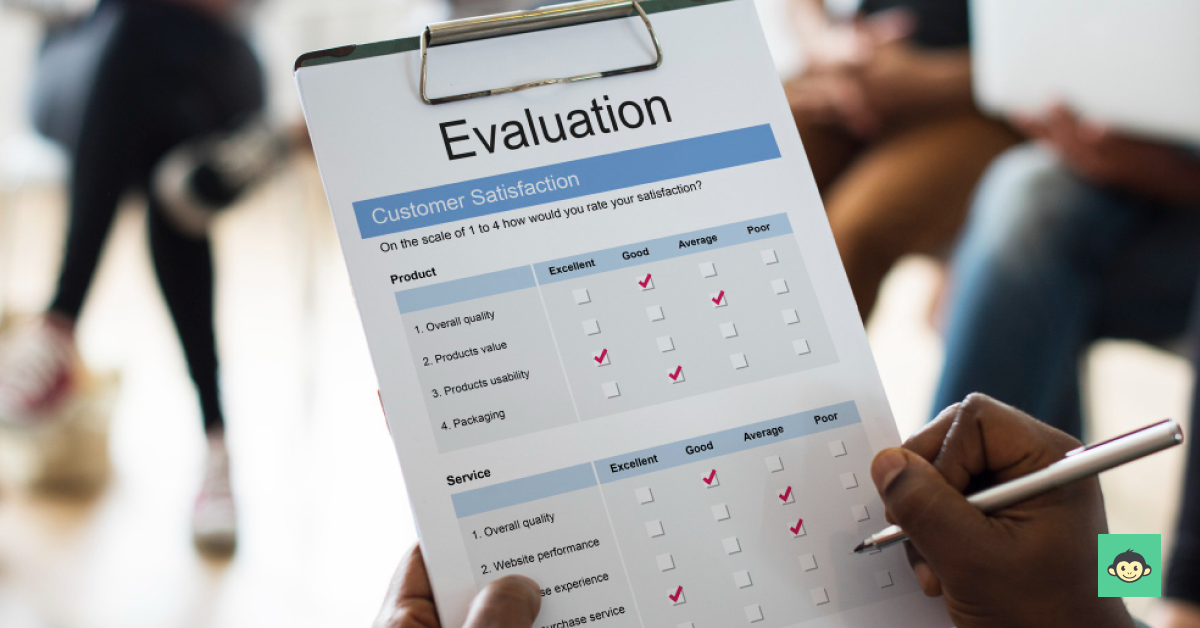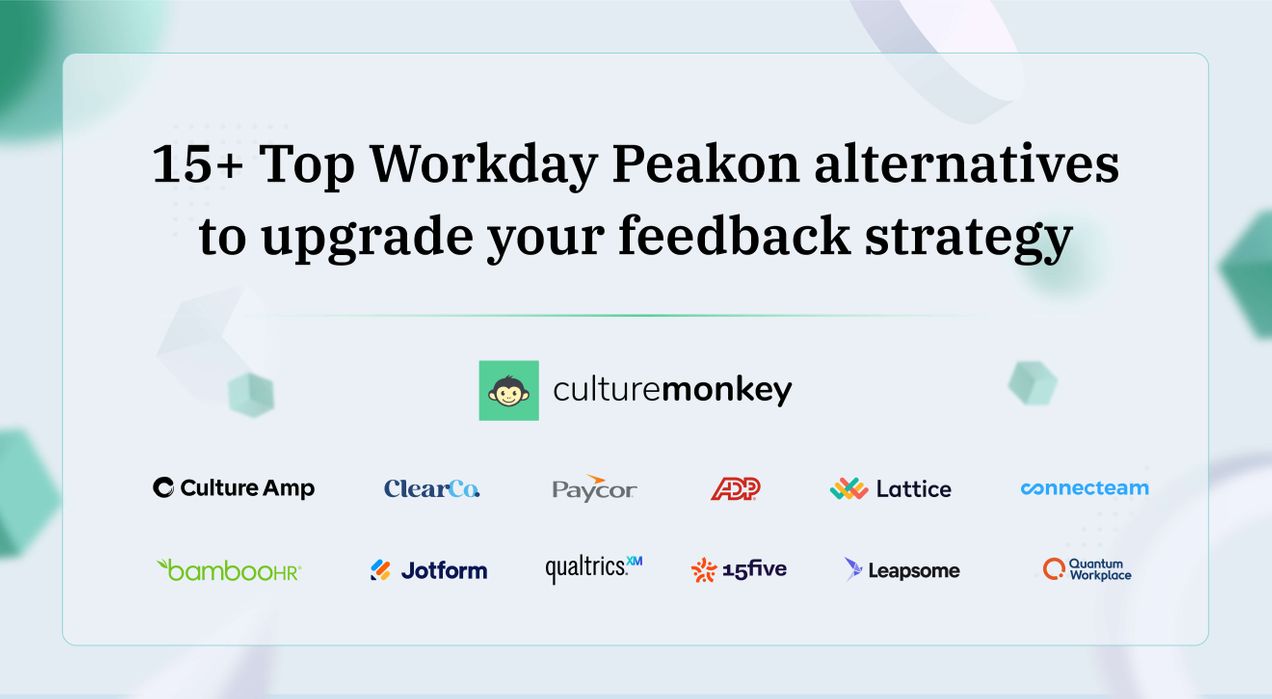How to make the best out of your employee engagement survey results?

Remember that feeling when you tried a new recipe, followed every step perfectly, but forgot to taste it before serving? The guests smiled politely, but something was missing, seasoning, maybe heart. That’s exactly what happens when you run an employee engagement survey and stop at collecting responses. The process looks complete, but something vital is still unsaid.
The real flavor comes from tasting, analyzing, and acting on the results. Employee engagement survey results aren’t just numbers in a spreadsheet; they’re your secret ingredients for culture change. When you listen closely, they reveal where trust needs attention and recognition needs sweetness, helping you build a workplace that truly satisfies.
TL;DR
What is the goal of employee engagement survey analysis?

These engagement survey analyses aim to gain meaningful insights from the collected data to drive positive change within the organization. By analyzing survey results, you can:
Understand employee perspectives
Employee engagement surveys provide an opportunity to understand how your employees perceive various aspects of their work environment. Analyzing the data helps you uncover their thoughts, opinions, and experiences, giving you a deeper understanding of what drives engagement and what areas may need improvement.
Identify strengths and areas for improvement
By carefully examining survey responses, you can identify areas where your organization is excelling and leverage those strengths. Additionally, you can pinpoint specific areas that may be causing disengagement or dissatisfaction among employees. This allows you to focus your efforts on addressing those areas and implementing targeted solutions.
Informed decision-making
Survey analysis provides valuable data to inform decision-making processes within the organization. By understanding the employee feedback and sentiments of your employees, you can make informed choices about policies, programs, and initiatives that will positively impact employee engagement and overall organizational performance.
Measure progress over time
Regularly analyzing survey results allows you to track progress and measure the effectiveness of your engagement initiatives. Ensuring that the organization takes effort to measure employee engagement, comparing data from different survey cycles, helps assess whether their efforts are making a difference and identify trends or patterns that may require further attention.
Foster continuous improvement
The ultimate goal of survey analysis is to drive continuous improvement in employee engagement. By using the insights gained from data, you can implement targeted strategies, monitor their impact, and iterate based on the feedback received.
This ongoing analysis, action, and refinement cycle helps create a work culture that continuously evolves and prioritizes employee satisfaction and engagement.
Remember, analyzing employee engagement survey results is not just about collecting data; it's about using that data to fuel positive change within your organization.
By understanding the goals of analysis and taking actionable steps based on the insights gained, you can create an environment where employees thrive and contribute to the success of the organization.
Why employee engagement survey results matter
Using employee engagement survey results is like tuning a soundboard before a big presentation. Tiny sliders change the whole experience. When you pair engagement survey analysis with clear action, small adjustments in recognition, workload, and communication amplify trust.
That’s why interpreting employee survey results well changes what people feel and do.
- Align strategy with reality: Employee engagement survey results show where plans meet friction. Use employee engagement analytics to spot gaps fast. When leaders shift priorities to match evidence, teams experience fewer false starts and faster wins across quarters.
- Detect risk early: Engagement survey analysis highlights burnout, manager issues, and workload spikes before exits rise. Escalate themes into fixes. Right-time changes keep critical roles stable and protect momentum when markets shift and hiring budgets tighten or freeze.
- Prioritize actions that matter: Not every dip deserves a project. Rank issues by impact and reach using employee survey results. Fund two quick wins and one deeper fix each quarter so progress is visible and sustainable without exhausting teams.
- Strengthen manager conversations: Clear readouts make tough chats easier. Provide a simple employee engagement survey results presentation with the headline, the driver, and the next step. Managers can explain changes quickly and avoid confusion during 1-1s and team meetings.
- Connect action to outcomes: Tie fixes to engagement, retention, and customer measures. When employee survey results drive roadmaps, you see cleaner handoffs and faster delivery. Evidence builds trust, and trust fuels better feedback next cycle for everyone.
- Benchmark what good looks like: Compare results to your last cycle and peers. This context prevents overreacting to noise. It also shows where you’re leading, where you’re behind, and where focused coaching can unlock gains quickly across teams.
- Make momentum visible: Publish owners, dates, and status. Short updates keep attention where it counts. When people see engagement survey results turning into finished work, skepticism fades, and participation rises next time and managers communicate progress consistently.
You’ve seen why engagement results are valuable. Now, let’s explore how to tell if your surveys are actually working.
How do you measure the success of employee engagement surveys?

Measuring the success of employee engagement surveys is like tuning an instrument, even a perfectly written melody sounds off if it’s not in harmony. You’ve collected your employee survey results, but true success lies in how well they resonate across participation, insights, and measurable change.
- Participation rate: High participation means trust in the process. If most employees respond, your engagement survey analysis reflects a genuine picture of the organization’s culture and connection.
- Actionable insights: Good data tells a story. Meaningful employee engagement survey results analysis should reveal clear next steps, not just patterns, but actions leaders can take immediately.
- Improvement in engagement metrics: Track engagement scores, response sentiment, and morale shifts over time. Improvement here signals that your engagement survey analysis is moving from measurement to meaningful impact.
- Employee feedback: Real success shows when employees feel heard. Consistent, constructive employee feedback after a survey means your communication loop works, it builds trust and encourages honest participation.
- Comparison to baseline and industry benchmarks: Benchmarking helps you see progress clearly. Comparing employee satisfaction survey results with industry averages or past surveys shows whether your initiatives are leading change or stalling.
- Organizational performance: The final measure is alignment. When better engagement connects to productivity, retention, and collaboration, your employee engagement survey analysis has truly turned insights into impact.
What are the common challenges of analyzing employee surveys?

Analyzing engagement results is like sorting a warehouse after a mega sale. Boxes look similar, labels blur, and decisions wait. When you analyze employee survey data at scale, the real work begins, from cleaning employee engagement survey responses to presenting survey data that leaders can act on and prioritizing signals over noise.
- Data overload: Dashboards flood with charts while exports fill folders. Stage employee engagement analytics by audience, timeframe, and theme. Focus on one narrative so decision makers see sequence, not chaos. Use sampling rules, cadence, and progressive disclosure consistently.
- Data quality: Messy inputs break trust. Standardize scales and labels before you analyze employee survey data and remove duplicates, partials, or bots. Validate employee engagement survey responses with thresholds and metadata checks so leaders believe the numbers and act quickly.
- Data interpretation: Numbers describe what happened. Interpretation explains why. Pair scores with drivers from employee engagement analytics and validate with comments. Avoid cherry picking by predefining hypotheses and success criteria so your story reflects reality and not wishful thinking.
- Identifying key insights: Not every spike deserves a project. Rank insights by impact, reach, and time to fix. Assign owners, deadlines, and budgets so employee engagement survey responses become clear, fast next steps rather than an endless backlog.
- Communication of findings: Great analysis fails without delivery. Presenting survey data must fit each audience with simple visuals and plain language. Share the headline, the driver, and the action. Use dashboards and manager toolkits so progress stays visible.
- Action implementation: Insights mean little without follow-through. Convert findings into projects with owners, budgets, and timelines. Tie each action to a measurable metric from employee engagement analytics so you can report wins quickly and adjust when results stall.
What are the results of employee engagement?

Reading engagement outcomes is like checking a weather radar before a big site visit. You spot clear skies, plan detours, and time departures. When employee engagement survey results and action plans align, leaders replace guesswork with timely moves. Here’s what consistent follow-through delivers when teams act on signals in real time.
- Increased productivity: Engaged teams waste less time switching tasks and guessing priorities, so output rises without adding headcount or longer hours. Clear goals, regular feedback, and fewer blockers translate effort into finished work faster across projects and quarters for everyone.
- Improved job satisfaction: When leaders close the loop on feedback, people feel progress, fairness, and purpose, which lifts day-to-day satisfaction and pride in work. Small wins stack through recognition, growth paths, and better tools, making tough weeks feel manageable rather than draining.
- Enhanced employee morale: Transparent updates and visible action turn survey skepticism into belief, which lifts morale and reduces the eye-roll factor around change. Momentum grows when managers share wins, admit misses, and invite ideas, creating steady energy across teams through every quarter.
- Lower turnover: Engagement work flags flight risks early, so you fix pay gaps, workload hotspots, and manager friction before resignations stack. Clear growth plans, flexible policies, and recognition give people reasons to stay through market swings and recruiting noise for longer.
- Better customer service: Teams with high engagement resolve issues faster and coordinate handoffs cleanly, so customers feel listened to rather than bounced around. Quality rises when frontline feedback shapes playbooks, training, and tools, closing loops between operations and customer outcomes in real time.
- Increased innovation: Psychological safety plus clear goals unlock more experiments, faster learning cycles, and bolder ideas that ship, not just slide decks. Engaged teams share insights across functions, turning small sparks into prototypes and pilots that prove value quickly at lower risk.
- Stronger organizational culture: When leaders act on feedback, values show up in schedules, budgets, and rituals, not posters, and culture becomes daily practice. Shared wins, clear norms, and manager coaching align behaviors, making collaboration easier and conflict healthier across teams over time.
How do you analyze employee engagement results the right way?

Analyzing engagement results is like a sprint retrospective after a tough release. You pause, scan the board, and turn noise into next moves. With clear goals, clean data, and sensible segmentation, you’ll convert engagement feedback into decisions your managers can actually run with. Then you brief teams and start fixing what matters first.
- Set goals and hypotheses: Define what success looks like, who your key audiences are, and the questions your survey must answer. Link every engagement question to measurable outcomes and established survey best practices—ensuring that your analysis stays focused, comparable across cycles, and immediately actionable for managers.
- Audit data quality and sampling: Standardize scales, labels, and metadata. Remove duplicates, partials, and bots. Validate anonymity thresholds. This protects trust and keeps employee engagement analytics credible before you model trends or segment results across cohorts and time properly.
- Segment the results with purpose: Compare departments, roles, locations, and tenure bands. Layer sentiment and favorability. This reveals where issues start and which audiences are improving, so your team engagement plan targets the right gaps quickly and clearly.
- Find drivers, not just scores: Correlate themes with outcomes. Cross-tab key items against turnover, eNPS, or performance indicators. Use text analytics on comments to explain why numbers moved, then confirm with managers early and avoid false positives before locking recommendations.
- Blend numbers with narratives: Pair metrics with engagement feedback. Code themes, tag examples, and link to moments in time. This gives context for decisions and makes your employee engagement survey results presentation credible, memorable, and easier for leaders to champion.
- Prioritize and plan actions: Rank findings by impact, effort, and urgency. Assign owners and timelines. Convert insights into a simple team engagement plan with two quick wins and one deeper fix per quarter, so progress feels real and measurable.
- Tailor the story to each audience: Build a one-page executive view, a manager toolkit, and a team deck. Your employee engagement survey results presentation should show the headline, the driver, and the action. Keep visuals simple and decisions obvious.
- Close the loop and measure: Share what you heard, what you’ll do, and when. Track changes against baselines and employee engagement survey best practices. Repeat short pulses to test fixes, and keep momentum with simple updates managers can deliver easily.
Best practices for responding to employee engagement survey results
Responding to engagement results is like a post release retrospective. You triage incidents, assign owners, and move fixes into the next sprint. Treat the employee engagement survey report as your backlog, combine employee climate surveys with analyze employee reviews, and let employee engagement analytics feed practical employee engagement plans that move quickly forward.
- Acknowledge and appreciate: Thank people for showing up in the employee climate surveys and name the participation rate. Make gratitude specific and timely. A short note from leadership and managers sets trust up front and primes honest follow ups in future cycles.
- Share the results: Publish a crisp employee engagement survey report with headlines, drivers, and next steps. Separate company wide themes from local insights. Offer a manager ready deck and one page summary so teams can explain results quickly without losing nuance or confidence.
- Address areas of concern: Prioritize three issues by impact, reach, and time to fix. Connect each problem to owners and budgets. Use employee engagement analytics to confirm the cause, choose quick wins, and protect capacity so commitments stick during quarter close and competing initiatives.
- Communicate action steps: Tell people what will happen, by when, and who owns it. Name two quick wins and one deeper fix. Keep updates short and visual so the employee engagement survey report translates into visible changes that reduce skepticism fast.
- Employee involvement: Invite volunteers to co design solutions, not just comment on slides. Run design sprints with cross-functional groups. Involve skeptics early, test options quickly, and publish learnings so engagement feedback becomes a shared plan people recognize as theirs.
- Regular progress updates: Set a monthly cadence. Share what started, what shipped, and what changed. A simple traffic light dashboard keeps momentum visible and lets managers answer questions fast, which protects trust when timelines slip and reminds everyone the plan is still moving.
- Celebrate successes: Shout out wins and name the people who made them happen. Tie each win back to survey themes. Short stories in all hands, newsletters, or chat help teams see progress and keep energy high through tougher fixes in flight.
- Continuous feedback loop: Close the loop every cycle. Share what you heard, what changed, and what still needs work. Use pulses to test fixes and refine employee engagement plans, then repeat so improvements compound and the next survey starts from a better baseline.
How to convert engagement results into measurable improvement

Turning survey insights into action is like converting a sprint retrospective into next quarter’s roadmap. You have signals from an engagement survey questionnaire and a staff engagement survey, but momentum comes from choices, owners, and timelines. Use this path to move from employee opinion survey data to visible change. Start where impact is biggest.
- Analyze the survey results: Start with cleaning and segmenting responses by role, tenure, and location. Compare scores from the staff engagement survey against the employee satisfaction survey for patterns. Tag themes in comments so findings translate quickly into decisions, not vague summaries.
- Set clear objectives: Define the outcomes you need within ninety days. Tie goals to metrics like participation, favorability, and retention. Map each objective to employee engagement tracking views so managers know what improves and how success will be reported across cycles.
- Involve stakeholders: Bring managers, HR, and cross functional leads into working sessions early. Share a readout so everyone sees the baseline. Use insights from the employee opinion survey to co design fixes, assign owners, and prevent conflicting projects from diluting momentum.
- Develop actionable initiatives: Translate findings into a set of projects. Pair two quick wins with one deeper fix per quarter. Align each initiative to a root cause from the engagement survey questionnaire so progress feels visible and leaders can sponsor resources confidently.
- Assign responsibilities and establish timelines: Name owners, budgets, and finish lines. Document dependencies and risks. Put every commitment on a single page and into employee engagement tracking dashboards so updates are automatic, reminders fire on time, and leaders can unblock issues before milestones slip.
- Prioritize communication and transparency: Explain what you heard, what will change, and when. Share tradeoffs honestly. Publish a lightweight cadence so teams know where to find updates, and your employee satisfaction survey audience sees that feedback drives choices rather than disappearing into quarterly reports.
- Allocate resources: Fund the work, not just the slide. Budget for tools, training, and manager time. Where possible, reassign lower impact projects so action plans from the staff engagement survey actually ship and the biggest fixes arrive before the next measurement window.
- Monitor and evaluate progress: Track leading and lagging metrics in one place. Use employee engagement tracking and quick pulses to test if fixes work. Share wins and blockers monthly, then tune the plan so improvements compound instead of resetting with every new survey cycle.
How to correctly communicate employee engagement results to the employees and stakeholders?

Sharing engagement findings is like directing traffic after a power outage: clarity prevents collisions, timing restores flow, and small signals matter. After workforce surveys, your survey data analysis process means nothing if the message lands late or vague. Use this playbook to translate survey evaluation into clear decisions people can trust.
- Lead with the headline: Start with one clear sentence, then the numbers. Share three top findings, one risk, one decision, and next step. Reference the survey data analysis process so stakeholders see how survey evaluation shaped message and priorities.
- Tailor by audience: Build an executive one-pager, a manager toolkit, and a team deck. Keep each version concise and role-specific. Link back to workforce surveys so people recognize their voice and understand why choices differ by function, location, and timeframe.
- Show what, why, when: For every theme, state the outcome, the driver, and the timeline. Use simple charts. Connect insights to decisions so employee engagement survey results feel useful, not abstract, and next actions are obvious to teams.
- Localize the story: Split company-wide themes from local insights. Give managers talking points, FAQs, and a short script. This helps teams connect results to daily work and keeps messages consistent while respecting differences by site, shift, or seniority.
- Make numbers human: Pair scores with short quotes and concrete examples. Summarize comment themes in one sentence each. Show how survey evaluation elevated these voices, and explain what will change first so people see themselves in the plan.
- Publish timelines and owners: Name who owns each action, the milestone date, and how progress will be shared. A simple roadmap reduces anxiety and invites help. Transparency turns observers into contributors and keeps leadership accountable without extra meetings.
- Create a repeatable cadence: Send monthly updates that show started, shipped, and learning. Run short pulses to test fixes. Close each note by linking back to the survey data analysis process so people see the loop and expect steady progress.
How CultureMonkey helps you turn survey results into action?
Turning survey results into meaningful action is where most organizations struggle — but that’s exactly where CultureMonkey excels. The platform doesn’t stop at collecting feedback; it helps leaders interpret, prioritize, and implement changes that actually move the needle on engagement.
With advanced analytics and automation, CultureMonkey bridges the gap between insights and impact, ensuring no piece of feedback goes unnoticed or unused.
- AI-powered insights that spotlight what matters most: CultureMonkey’s AI engine analyzes employee survey data to surface key engagement drivers and areas needing urgent attention — helping leaders focus on what will create the biggest impact, not just the loudest signals.
- Role-based dashboards for clarity and accountability: Each manager gets customized dashboards that highlight relevant team insights, enabling localized action instead of a one-size-fits-all approach. This ensures that every department—from HR to operations—owns its part of the engagement journey.
- Automated action planning tools: The platform converts survey feedback into ready-to-implement action plans. Managers can select recommended actions, set goals, assign owners, and track progress—all within the same dashboard.
- Real-time tracking and continuous feedback loops: CultureMonkey allows organizations to monitor how engagement scores evolve over time. By running quick pulse checks post-action, you can measure whether your initiatives are working and recalibrate instantly if needed.
- Integration with workplace tools for seamless execution: With integrations across Slack, Microsoft Teams, and HRMS platforms, CultureMonkey ensures feedback and follow-up actions happen where employees already communicate—making it easy to sustain engagement and accountability.
Summary
FAQs
1. How to improve employee engagement survey results?
Focus on low scores and engagement levels that directly influence team results and business outcomes. The HR team should review results with key stakeholders, calculate favorability, and identify key themes from the survey. Comparing previous results helps track progress, address employee concerns, and create positive change that strengthens workplace culture and improves engagement long-term, consistently.
2. What actions should be taken after survey results?
Publish a simple summary with key takeaways, engagement levels, and low scores. Assign owners, budgets, and deadlines to each focus area. Calculate favorability and confirm drivers using comments. Brief team managers and the leadership team. Monitor response rates and numeric scores monthly, compare previous results, and adjust plans quickly to maintain momentum and reduce turnover risk now.
3. How to communicate employee engagement survey results effectively?
Translate findings into a meaningful story. Use pie charts, bar graphs, and line charts to show engagement levels, response rates, and numeric scores. Lead with key takeaways, then actions and timelines. Tailor messages for key stakeholders and team managers. Connect results to next steps so people understand what changes, who owns it, and when, in plain language.
4. How to present results of employee engagement surveys?
Keep the deck short and visual. Start with engagement levels, response rates, and key themes. Present numeric scores using pie charts, bar graphs, and line charts. Highlight low scores, show team results, and compare previous results. Finish with owners, deadlines, and expected impact, so leaders can decide quickly and teams know what happens next, after this meeting
5. Is 21% higher profitability?
Yes. Studies show highly engaged employees correlate with up to 21% higher profitability. Improve engagement levels by addressing low scores, boosting response rates, and aligning team results with customer outcomes. When managers calculate favorability, act on key themes, and stabilize the work environment, organizations reduce turnover rate and see clearer, faster business results across markets and cycles
6. Why are survey results important for employee engagement?
They provide valuable insights about engagement scores, team dynamics, and the work environment. Leaders review results, calculate favorability, and compare previous results to spot patterns. Clear data helps prioritize key areas, address low scores, and craft meaningful action that strengthens workplace culture, improves team results, and ties investments to measurable business outcomes that stakeholders can trust.
7. What are employee engagement survey results?
They are numerical data and comments that capture engagement rate, response percentage, and key themes across teams. HR teams and key stakeholders calculate favorability, highlight low scores, and compare previous results with other organizations. These findings guide meaningful action, clarify focus areas, and help managers translate insights into practical changes that improve team results and culture health.
8. How do you analyze employee engagement survey results?
Start with low scores, response rates, and engagement levels to find gaps. Calculate favorability and map key themes by team results, tenure, or location. Use pie charts, bar graphs, and line charts to visualize patterns. Compare previous results, brief key stakeholders, and convert insights into timelines, owners, and actions that drive measurable improvements across teams and quarters.
9. What are benchmarks for employee engagement survey results?
Benchmarks vary, but engagement scores above seventy percent favorability usually indicate strength. Calculate favorability consistently and track response rates to ensure reliable comparisons. Compare team results with previous results and other organizations to locate key areas. Watch low scores closely, and use numeric scores plus comments to explain movement before planning changes with stakeholders and managers.



